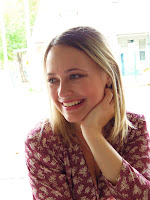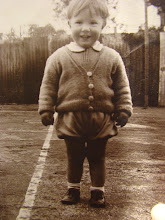 |
| Singer Debbie Harry of Blondie Photograph by Mick Rock |
 |
| David Bowie Photograph by Mick Rock |
Photographs by Mick Rock, known as "The Man Who Shot the 70's", are on display at Blender Gallery for another three weeks http://www.blender.com.au/exhibitions/mick-rock-exposed/ in Paddington Sydney. The exhibition was to finish this weekend but because of public interest, Director Tali Udovich has extended the show until August 20th. Mick Rock is perhaps the most stylised and conceptual of rock photographers, but still capable of simple, honest reportage when required. Blender Gallery appear to have happily gone over to the 'dark side' and now describe their gallery as "Specialists in Music Photography & Rock 'n' Roll Prints". This would appear to be a good thing as Rock and Roll's pervasive presence in youth (and not so young) culture deserves passionate, critical exposure. In the past Blender Gallery have done this regularly through exhibitions including photographs by Ethan Russell, Henry Diltz and Australia's Tony Mott, Philip Morris and Bob King.
With this exhibition, Blender Gallery also launched Mick Rock's latest publication, "MICK ROCK - EXPOSED - The Faces of Rock 'N' Roll". Everyone from rock culture's past four decades are here - Queen and its melancholic leader, the late Freddy Mercury, Syd Barrett, Lou Reed, Blondie, Iggy Pop, right up to the current Queen of Art Rock, Lady Gaga. (I recently caught her latest television performance by chance, on Saturday Night Live. Suitably extravagantly clad, Lady Gaga sang brilliantly, proving she is much more than just her amazing visuals.) In his book, Mick Rock contributes a revealing introduction, offers detailed captions for each picture but also includes an essay by eminent British playwright Tom Stoppard. (The book is on sale at Blender Gallery at its recommended retail price of $50.00)
Fast, Digital Compact Cameras continue to surprise
 |
| Nikon SP camera with 35mmf1.8 Nikkor |
 |
| Nikon Coolpix P300 digital camera |
The new generation of compact digital cameras with fast wide angle zoom lenses started with Samsung's EX-1 and continued with new models from Olympus and Canon. (ozphotoreview has already favourably reviewed Canon's fine S95) This trend continues with Nikon's outwardly modest Coolpix P300. (pictured, left) However, this simply styled camera has a number of surprises in store. I quickly found it remarkable for both versatility and image quality. After travelling with this camera to Sydney and using it under a wide variety of lighting conditions I came to the conclusion that fast digital compacts, having roughly the same dimensions as a pack of playing cards, were capable of equalling (perhaps surpassing) the versatility of the great 35mm rangefinder workhorses from a half century ago - such as Canon's VIT and the Nikon SP.(pictured, above right) If this seems an ambitious claim, consider the fact that the Coolpix contains essentially the same focal lengths within its zoom lens as a Nikon SP with 25, 50, 85 and 105 lenses, but also shoots HD video. However the SP, favoured by many LIFE and LOOK photojournalists in the late 1950's and early 1960's, was equal to any picture-taking situation in its era. With its fast 35mm, 50mm and 85mm lenses, this camera represented the pinnacle of Japanese coupled-rangefinder camera design. (Nikon S rangefinder cameras began their life as picture-taking instruments clearly derived from pre-war Zeiss Contax cameras. Constant improvements at Nippon Kogaku quickly transcended the original German design) But after the Nikon SP reached its peak, there would be no more Nikon rangefinder
 |
| Martin Sharp at "Wirian" Photograph by Robert McFarlane |
 |
| Tiny Tim, Luna Park 1979 Photograph by Robert McFarlane |
 |
| Psychologist Michelle Sexton |
This would mark the beginning of another tradition: the introduction in 1959 of a new camera that would quickly become famous for its extreme durability - the Nikon "F" 35mm SLR (but that's another story) Using its advanced viewfinder, the Nikon SP could accomodate lenses
 |
| Jade, taken with Nikon P300 |
"Pope Alice" Returns to the ACP.
 |
"Pope Alice" at Lake Galilee, Qld. Photograph by Luke Roberts |
The Australian Centre for Photography http://www.acp.org.au/ is currently showing two exhibitions which encompass important perimeters of current art practice: Luke Roberts is presenting AlphaStation/Alphaville, yet another courageous, unsentimental exploration into personal identity, as well as revisiting one of his most potent creations - the elusive, mythic and slightly ominous presence of Pope Alice. (pictured, above) Inspired, and perhaps provoked by his strict Catholic upbringing in Queensland, Australia (and Roberts' reaction to the Catholic Church's abhorrence of homosexuality) Pope Alice now has a wandering life of her own in the hands of this dedicated artist. Typically, Roberts has added an extra, ironic touch to his panoramic evocation of the celestial Pontiff - by photographing her at Lake Galilee. Not the same body of water as in the Holy Land, but in a remote, waterless part of Queensland. Until July 23 Practising What You Preach, and also Show.
| Photograph by Steve Lock |
Photograph by Angela Rose Woods |
On display at the same time as the sadly soon to finish exhibition by Luke Roberts, is work by the students at the Australian Centre for Photography. This current exhibition reveals at least two of the extremes of modern photography - images which could only be produced in the age of Pho toshop - and pictures so fluid, observational and brilliantly narrative, (pictured above left) that thoughts of artifice simply do not occur. And as the former husband of brilliant illustrator, Kate Burness (her remarkable 1973 Rolling Stones poster was featured in Get On Down (pictured, right - with the book using Martin Sharp's brilliant poster for Jimi Hendrix as the cover image) http://www.poster-books.com/music/get-on-down-a-decade-of-rock-and-roll-posters.shtml) I am aware of the skills possessed by talented, imaginative artists. But when I saw the wonderful photo-illustration created by Angela Rose Woods (pictured above) I had to acknowledge what may be dreamed, can now be made real through software such as Photoshop http://www.adobe.com/products/photoshop.html challenging the traditional draftsmanship and classical colourist skills possessed by artists such as Burness.
toshop - and pictures so fluid, observational and brilliantly narrative, (pictured above left) that thoughts of artifice simply do not occur. And as the former husband of brilliant illustrator, Kate Burness (her remarkable 1973 Rolling Stones poster was featured in Get On Down (pictured, right - with the book using Martin Sharp's brilliant poster for Jimi Hendrix as the cover image) http://www.poster-books.com/music/get-on-down-a-decade-of-rock-and-roll-posters.shtml) I am aware of the skills possessed by talented, imaginative artists. But when I saw the wonderful photo-illustration created by Angela Rose Woods (pictured above) I had to acknowledge what may be dreamed, can now be made real through software such as Photoshop http://www.adobe.com/products/photoshop.html challenging the traditional draftsmanship and classical colourist skills possessed by artists such as Burness.
 toshop - and pictures so fluid, observational and brilliantly narrative, (pictured above left) that thoughts of artifice simply do not occur. And as the former husband of brilliant illustrator, Kate Burness (her remarkable 1973 Rolling Stones poster was featured in Get On Down (pictured, right - with the book using Martin Sharp's brilliant poster for Jimi Hendrix as the cover image) http://www.poster-books.com/music/get-on-down-a-decade-of-rock-and-roll-posters.shtml) I am aware of the skills possessed by talented, imaginative artists. But when I saw the wonderful photo-illustration created by Angela Rose Woods (pictured above) I had to acknowledge what may be dreamed, can now be made real through software such as Photoshop http://www.adobe.com/products/photoshop.html challenging the traditional draftsmanship and classical colourist skills possessed by artists such as Burness.
toshop - and pictures so fluid, observational and brilliantly narrative, (pictured above left) that thoughts of artifice simply do not occur. And as the former husband of brilliant illustrator, Kate Burness (her remarkable 1973 Rolling Stones poster was featured in Get On Down (pictured, right - with the book using Martin Sharp's brilliant poster for Jimi Hendrix as the cover image) http://www.poster-books.com/music/get-on-down-a-decade-of-rock-and-roll-posters.shtml) I am aware of the skills possessed by talented, imaginative artists. But when I saw the wonderful photo-illustration created by Angela Rose Woods (pictured above) I had to acknowledge what may be dreamed, can now be made real through software such as Photoshop http://www.adobe.com/products/photoshop.html challenging the traditional draftsmanship and classical colourist skills possessed by artists such as Burness.But There's More! Coming Attractions at the ACP.
 |
| Photograph by Lloyd Godman |
Starting on July 29th are two exhibitions that exploit photography's traditional strengths. In Gallery 3, Lloyd Godman will present Entropy, a suite of colour photographs that illustrate how the Australian bush regenerated after the tragic Victorian bushfires of 2009. (pictured, left) Accompanying Godman will be Disappeared by Remained an exhibition of Korean photographers (one of retiring ACP Director Alasdair Foster's achievements has been to embrace the reality of Australia's presence in Asia and the Pacific) The artistry of the Korean people is often overlooked when considered in context with their phenomenal capacity for imaginative hard work (a contemporary Korean saying proclaims 'we are the only people who make the Japanese look lazy!)
 |
| Photograph by Woon-Gu Kang |
 |
| Photograph by Ki-Chan Kim |
Disappeared but Remained offers the work of three distinguished Korean photographers: Woon-Gu Kang, Ki-Chan Kim, and Gap Chul Lee in an exhibition curated by the Museum of Photography, Seoul.
Each understands the idea that every photograph, in some way, is an elegy for a past experience or person. Defying global artistic trends, Korean photographers pursue what their spokesman called, "the essential characteristic of photography: the representation and preservation of reality. The photographers ... (and) focus on documenting disappearing moments, places or objects (within) the radical social change of South Korea’s rapid industrialization and westernization."
Just out: 2011 Compendium of Australian Photographers.
Just off the presses in China is a remarkable addition to Australian publishing - a beautifully designed and reproduced book which contains the work of the vast majority of photographers (over 130) who exhibited in recognised Australian art galleries during 2011. Each photographer supplied one photograph and accompanying text with their contact details. The Compendium(pictured, left and right) was created by Mary Meyer and Bob Kersey, founders of the Meyer Gallery http://www.meyergallery.com.au/ and becomes, after the quickest reading (a copy arrived only hours ago) a uniquely valuable source of reference for the current (and annual) state of this dynamic Australian art. To obtain copies, please contact Mary Meyer on 0409 971 940 or visit http://www.thecompendium.com.au/ to find out how to participate in future editions.
Text: Copyright Robert McFarlane 2011 http://www.robertmcfarlanephotos.com/






Wow. Love the pickie of Martin. Mind if I turn it into a portrait? Also, I have a strange feeling I met Jade once. Didn't she work for someone who was seeing Leon F.? cheerio, Simon Bedak
ReplyDelete